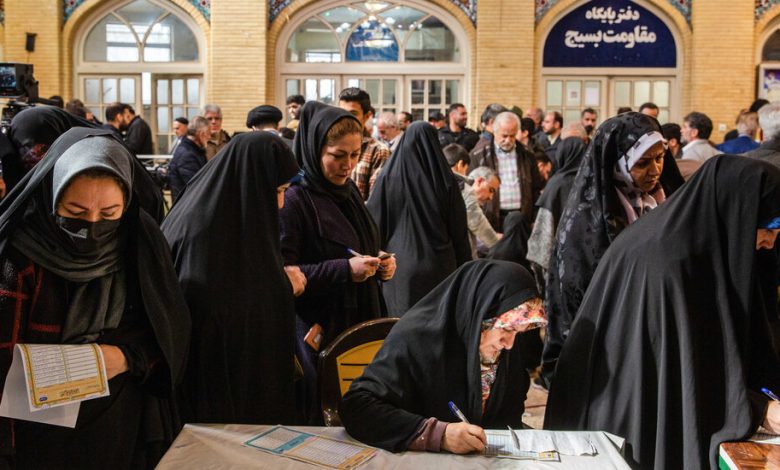Change Is Coming to Iran, Just Not the Change We Hoped For

On March 1, Iranians went to the polls for the first time since the protest movement of 2022 and the war in Gaza. The vote, for the Parliament and Assembly of Experts, which appoints the supreme leader, was far from a referendum on current leaders, though. The big result was the number of people who didn’tvote. Even if we are to believe official numbers, the turnout of this election marks the lowest since the Islamic Revolution of 1979: only 41 percent of Iranian voters showed up at the polls.
Regardless of the turnout, change would not have come at the ballot box. The theocratic regime has never held free or fair elections, but this one made even the facade of fairness difficult to uphold. Most reformists and even centrists were banned from running. Iranians instead had the option to vote for varying degrees of conservative and hard-line candidates, often competing only in their effusive praise for the supreme leader, Ayatollah Ali Khamenei.
But it would be a mistake to assume that hard-line victories and political stagnation augur the continuation of the status quo. Despite their Islamist declarations, many politicians in the Islamic Republic are not ideologues or revolutionaries, but technocrats or pragmatists who have gathered around Ayatollah Khamenei for proximity to his power.
Today’s Iran is held together by the octogenarian Ayatollah Khamenei and his authority. Upon his death, Iran is likely to make a sharp turn in its policies. A closer look at the cast of characters now vying for power behind the scenes shows that Iran’s policies are likely to be made more palatable both to its people and to the West, turning the country away from theocracy toward a mundane military authoritarian regime. A new Iran may be on the horizon, even if it’s not the Iran anti-regime protesters have hoped for.
Ayatollah Khamenei’s 35-year reign over Iran has resulted in economic isolation, societal repression and support for Islamist militias in Lebanon, Gaza, Yemen, Iraq and elsewhere. In other words, he has committed Iran to the ideals of the 1979 revolution, no matter the consequences. In today’s Iran, few people are willing to continue paying the price.
Millions of women, at the risk of arrest and punishment, keep up resistance to the mandatory hijab policy that helped spark the 2022-23 protest movement. This defiance of the regime signals massive dissatisfaction with some of its flagship policies.
